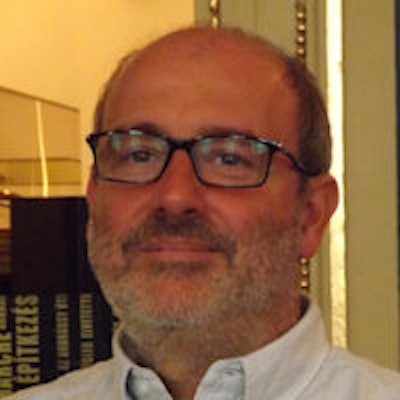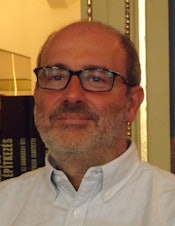
One of the greatest problems facing the radiological community is the debate about breast screening, according to Dr. Gábor Forrai, the next president of the European Society of Breast Imaging (EUSOBI). There are other challenges out there -- not least capacity (of people and machines) and dubious practices -- but perhaps none are so pressing.
Forrai's three-year term as president will begin in October 2015, but EUSOBI is already working on all these issues, if only to develop consistent messaging across Europe. Guidelines for breast imaging, screening, and interventions are being planned, and the organization is creating a network of national societies, the first meeting of which was held in Amsterdam. More than 30 countries have expressed an interest in participating, 22 of which were actually represented.
 Dr. Gábor Forrai, the next president of the European Society of Breast Imaging.
Dr. Gábor Forrai, the next president of the European Society of Breast Imaging."For all of them, support in the screening debate seems to be one of the most important problems," explained Forrai, a recent addition to AuntMinnieEurope.com's Editorial Advisory Board. "Every single country has a huge problem with politicians and healthcare decision-makers. Some countries that have no organized screening programs say they are worried about launching them because of the debate."
Forrai, who was previously head of radiology at the Defence Forces Hospital/Teaching Hospital University Semmelweis in Budapest and secretary general of the Hungarian College of Radiology from 2005 to 2011, insists the scientific case for breast screening is beyond doubt, and is far better controlled for output than for many other procedures -- chest x-rays, for example -- used on a daily basis in hospitals without question. He is baffled by the debate, and said he has no explanation for the "huge emotions" that breast screening arouses.
Contradictory views
Part of the problem lies with the plethora of contradictory stories that circulate in the press. He thinks scientific debate should not be conducted in the media, and members of the medical community who air such "destabilizing" matters should be more conscious of their "popular responsibility." It is right and proper to question things scientifically, but the forum should also be appropriate, and the aim should be to counter the confusion with scientifically backed, plainly worded recommendations, according to Forrai. He wants to see them translated into native languages and distributed to a wider audience that includes referring clinicians and, most importantly, the patients themselves.
Another major challenge is widely promoted diagnostic or screening procedures that are either unproven or plain bogus. Forrai said he has been around long enough to be skeptical of almost everything until the weight of evidence makes it impossible to ignore. Some techniques burn brightly early on, but then disappear. Others "vegetate" while "trying to find their place." A few do stand the test of time and scientific analysis, though.
"Tomosynthesis will mostly replace digital mammography," he predicts. "It is more like CT, it makes a movie from a series of 'slides' that allow you to focus in and see the structure much better than with conventional mammography. It has a 30% improved detection rate. That is revolutionary."
Breast MRI
Breast MRI is undoubtedly an emerging technology and has an important contribution to make, but the drawback, ultimately, will be capacity, Forrai explained. The principal beneficiaries are those at greatest risk of breast cancer because of family history or because they carry gene mutations.
"In this group, MRI is far superior to mammography. It is much more sensitive and specific; a lot more cancers can be found, especially in young women. The problem is there is not enough MRI capacity in the world, because it is used for a lot of other conditions," he added.
Able to detect cancers as small as 3 mm, its greatest use could well be preoperative, determining which plans and therapies are appropriate for the individual patient. EUSOBI and the European Institute for Biomedical Imaging Research have joined together to launch the MIPA study, covering some 30 centers across Europe, Australia, and the U.S., and involving 1,500 patients thus far, to gather enough clinical data to draw up meaningful protocols.
But even if a way could be found to fund dedicated machines used exclusively for breast MRI scans, there would still be the issue of who would read the images.
"In Hungary, 100 radiologists have the complex breast diagnostic license. For breast MRI, there are about 10 people qualified to read. And people experienced to make a MRI-guided breast intervention? One," he said, adding that in some other countries, the proportions of radiologists' skills may well be similar.
These then are just some of the challenges that his three-year term holds: a need to debate, to educate, and to engage with a wider audience. The goal is for EUSOBI to become a thought leader. Forrai will not find himself idle in the years to come.



















